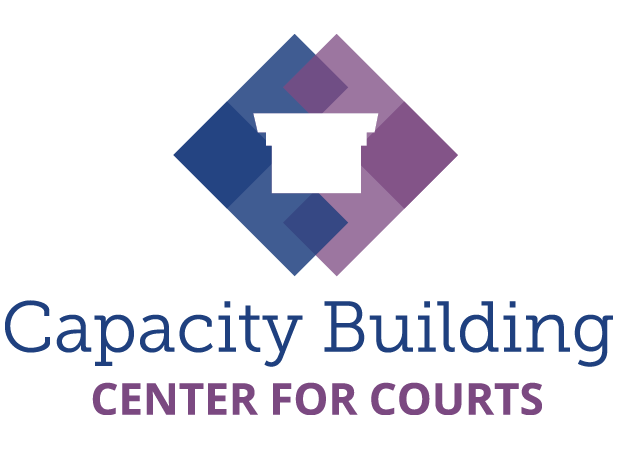Developed by the National Council of Juvenile and Family Court Judges – Capacity Building Center for Judges
Introduction
This volume offers a step-by-step process to help you implement the Judicial, Court, Attorney Measures of Performance (JCAMP) in your court system. It provides practical advice and assistance, including insights and lessons learned from JCAMP sites who field-tested the measures. The guide outlines a process that performance measurement teams, and those tasked with collecting data on the JCAMP measures, can use to plan for and implement performance measurement, as well as use results from these efforts to drive court improvement. When available, lessons learned from field testing of the measures are integrated into implementation guidance. The guide should be used in conjunction with JCAMP Volume III: Implementation Toolbox (Toolbox), which contains template tools for each step of the performance measurement process outlined in the Implementation Guide.
Whom is this Implementation Guide for?
This guide supports court improvement communities to collect, analyze, and use JCAMP data in their continuous quality improvement (CQI) efforts. It is meant to offer guidance, regardless of differing measurement capacity, available resources, or jurisdictional size. It provides practical information about how to plan, conduct, report, and use performance measurement information. It is designed to be used as a reference tool. The six basic steps for a performance measurement process are listed below.
- Step 1: Form Your Team. Set up performance measurement teams to guide your efforts.
- Step 2: Select and Prioritize Measures. Use a needs assessment process for prioritizing among measures and determining data capacities for measurement.
- Step 3: Visualize Your Path. Develop an action plan to implement the measures, including planning for data collection, analysis, and report writing.
- Step 4: Get Your Data. Use data collection strategies, including tips for sampling and using different measurement approaches and tools.
- Step 5: Use Your Data. Use tips for analyzing and interpreting your data and using results in a CQI process.
- Step 6: Sustain Your Performance Measurement Efforts. Plan for sustaining performance measurement beyond a single implementation.
Form Your Team
Before deciding which performance measures to collect, you should put together a multidisciplinary performance measurement committee: an advisory or working team to support your data collection efforts. This team will chart the course of the performance measurement process, play a leadership role in decision-making about the measures, and be responsible for making the process purposeful and responsive to the court community—it will help ensure performance measurement is successful.
Your performance measurement efforts will benefit from a team approach that includes a diversity of experiences, skills, viewpoints, racial and ethnicity groups, and gender identities. To be successful, your team should reflect all the key stakeholders in the court system and include members from judges, attorneys, court administrators, and system partners (e.g., child welfare agency, parent and youth peer support advocates, tribal representatives). Your team should include members with lived experiences, parents, children, youth, relative caregivers, and foster parents who can provide a necessary and critical perspective. Community members who have experienced the child welfare court system first hand also have a wealth of knowledge about what works and what doesn’t.
Questions to Ask as You Set Up Your JCAMP Team
- Who is participating? Who is missing and still needs to be invited?
- Do you have representation from all key court stakeholders, individuals with lived experience, tribal partners, and other system partners?
- Is your team diverse in terms of racial/ethnic backgrounds and gender identities?
- With each functional part of the system (the courts, the child welfare agencies, legal representatives, etc.), who are the people with formal decision-making power and authority? Have they or their designees been invited?
- Who could block or delay implementation of any decisions that emerge from the team? Have these people been invited?
- Are individuals with access to the information needed for performance measurement included?

